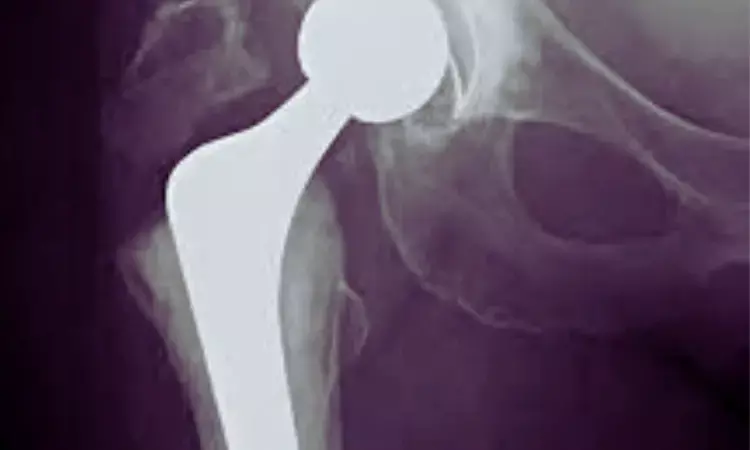- Home
- Medical news & Guidelines
- Anesthesiology
- Cardiology and CTVS
- Critical Care
- Dentistry
- Dermatology
- Diabetes and Endocrinology
- ENT
- Gastroenterology
- Medicine
- Nephrology
- Neurology
- Obstretics-Gynaecology
- Oncology
- Ophthalmology
- Orthopaedics
- Pediatrics-Neonatology
- Psychiatry
- Pulmonology
- Radiology
- Surgery
- Urology
- Laboratory Medicine
- Diet
- Nursing
- Paramedical
- Physiotherapy
- Health news
- Fact Check
- Bone Health Fact Check
- Brain Health Fact Check
- Cancer Related Fact Check
- Child Care Fact Check
- Dental and oral health fact check
- Diabetes and metabolic health fact check
- Diet and Nutrition Fact Check
- Eye and ENT Care Fact Check
- Fitness fact check
- Gut health fact check
- Heart health fact check
- Kidney health fact check
- Medical education fact check
- Men's health fact check
- Respiratory fact check
- Skin and hair care fact check
- Vaccine and Immunization fact check
- Women's health fact check
- AYUSH
- State News
- Andaman and Nicobar Islands
- Andhra Pradesh
- Arunachal Pradesh
- Assam
- Bihar
- Chandigarh
- Chattisgarh
- Dadra and Nagar Haveli
- Daman and Diu
- Delhi
- Goa
- Gujarat
- Haryana
- Himachal Pradesh
- Jammu & Kashmir
- Jharkhand
- Karnataka
- Kerala
- Ladakh
- Lakshadweep
- Madhya Pradesh
- Maharashtra
- Manipur
- Meghalaya
- Mizoram
- Nagaland
- Odisha
- Puducherry
- Punjab
- Rajasthan
- Sikkim
- Tamil Nadu
- Telangana
- Tripura
- Uttar Pradesh
- Uttrakhand
- West Bengal
- Medical Education
- Industry
Starting Osteoporosis Medication After Hip Fracture Halves Risk of Implant-Related Breaks: Study Suggests

Taiwan: A recent research published in Osteoporosis International revealed that the early use of anti-osteoporotic medication (AOM) following a hip fracture can significantly reduce the risk of dangerous periprosthetic fractures (PPFs).
The study found that patients who began treatment soon after their initial fracture cut their risk of PPFs by half and also lowered the likelihood of sustaining a second hip fracture on the opposite side. Despite similar long-term mortality rates compared to other fracture types, individuals with PPFs faced a higher burden of subsequent major osteoporotic fractures, underscoring the importance of preventive therapy.
The study was led by Dr. Shau-Huai Fu and colleagues from the Department of Orthopaedic Surgery, National Taiwan University Hospital, Taipei, Taiwan. Using data from Taiwan’s National Health Insurance Research Database, the researchers analyzed outcomes for more than 48,000 patients who sustained hip fractures between 2016 and 2018. They aimed to assess the incidence, risk factors, and prognosis of PPFs and evaluate whether initiating AOM could mitigate these risks.
“Periprosthetic fractures remain a serious complication after hip fracture, with significant consequences for patient health,” the authors explained. “Our findings highlight the protective role of osteoporosis treatment in reducing both periprosthetic and contralateral second hip fractures.”
The key findings of the study were as follows:
- Out of the total cohort, 443 patients (0.9%) developed periprosthetic fractures (PPFs).
- A total of 2,285 patients (4.8%) experienced contralateral second hip fractures (2HFs).
- Patients aged 60 to 69 were at particularly high risk for PPFs.
- Initiating anti-osteoporotic medication (AOM) after the first hip fracture reduced the risk of PPFs (HR 0.50).
- AOM initiation also lowered the risk of contralateral second hip fractures (HR 0.85).
- Five-year mortality rates were similar between PPF and 2HF patients (33% vs. 30%).
- Patients with PPFs were twice as likely to experience subsequent major osteoporotic fractures compared with 2HF patients (7.5% vs. 3.7%).
- PPFs are associated with a higher risk of long-term disability and reduced quality of life, beyond mortality.
The authors concluded that early initiation of osteoporosis therapy after hip fracture represents an important preventive strategy. By reducing the risk of both PPFs and second hip fractures, AOM use has the potential to improve long-term outcomes for older adults recovering from hip fractures. They noted that further research is needed to optimize treatment protocols and encourage broader adoption of AOM use in clinical practice.
"The study adds to the growing body of evidence supporting proactive management of osteoporosis in patients with hip fractures. Given the high rates of complications and the burden on healthcare systems, ensuring that more patients receive appropriate treatment could play a critical role in improving outcomes and preventing future fractures," the authors concluded.
Reference:
Lo, SW., Yen, HK., Huang, CC. et al. Incidence, risk factors, prognosis of periprosthetic fractures post hip fracture: unveiling protective role of anti-osteoporotic medication. Osteoporos Int (2025). https://doi.org/10.1007/s00198-025-07670-3
Dr Kamal Kant Kohli-MBBS, DTCD- a chest specialist with more than 30 years of practice and a flair for writing clinical articles, Dr Kamal Kant Kohli joined Medical Dialogues as a Chief Editor of Medical News. Besides writing articles, as an editor, he proofreads and verifies all the medical content published on Medical Dialogues including those coming from journals, studies,medical conferences,guidelines etc. Email: drkohli@medicaldialogues.in. Contact no. 011-43720751
Next Story


